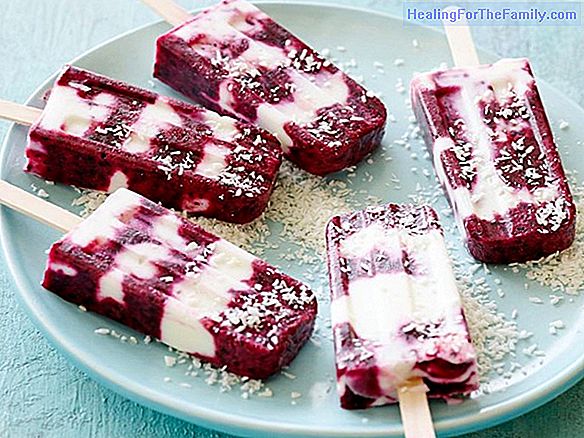Yogurts and other dairy desserts, which are the most recommended?
When deciding which yogurt or dairy dessert we offer our children, we have a great variety to choose from in the refrigerated section of the supermarket. As if that were not enough, some of them have an incredible marketing campaign that tries to convince us of the wonderful properties they have así
When deciding which yogurt or dairy dessert we offer our children, we have a great variety to choose from in the refrigerated section of the supermarket.
As if that were not enough, some of them have an incredible marketing campaign that tries to convince us of the wonderful properties they have así, so the decision is complicated.What yogurts and dairy desserts our children drink
- Natural yoghurt:

Contains milk and dairy ferments, Lactobacillus delbrueckii subsp bulgaricus and Streptococcus thermophilus. It should not contain anything else, and precisely this, containing only these two ingredients is what makes yogurt a superfood. Fermented milk does not contain lactose, but contains all the nutrients of milk, calcium for strong bones and vitamin D for absorption, as well as phosphorus, also important for bones, and other vitamins, both water-soluble and fat-soluble. It also contains proteins of relatively high biological value. There are also sugary ones, which contain sugar, and sweetened, usually with artificial sweeteners. - Flavored yogurts:
In addition to the ingredients of natural yogurt, flavored yogurts contain artificial colors to resemble the color of the fruit, and flavorings, and above all, sugar, our great enemy. - Yogurts with fruits:
Instead of taking flavorings, these yogurts contain a percentage of fruit, although quite small, which can be in pieces or shakes. Depending on the type of fruit, they tend to have more or less quantity, with strawberries being the most common, although they may vary between different brands. In addition, they also contain sugar and, especially those that carry the whipped fruit, may contain artificial colors. - Yogurts with bifidus:
These yogurts can be natural or with fruit (containing more or less the same ingredients as these but with a higher price), but in both cases, in addition to the usual lactic ferments of yogurt, they have others that they are included within the group called "active bifidus". The "active bifidus" are probiotics, specifically bifidobacteria to which certain properties beneficial to health can be attributed. Behind this group of yogurts there is an incredible marketing campaign that encourages the consumer to buy it trying to boost its benefits compared to normal yogurts. - Probiotics to drink:
Like yogurts with bifidus, these yogurts contain probiotics to which health benefits are attributed. In addition, they contain a large amount of sugars or artificial sweeteners (0% range), in addition to containing flavorings when they are not "natural". When studies are carried out with these products, it is very difficult to break down the benefits provided by the so-called probiotic strains already provided by the strains used to make yoghurt, Lactobacillus delbrueckii subsp bulgaricus and Streptococcus thermophilus, which, although they increase the product price, it can not be affirmed with certainty that they also increase their profit. As they also contain sugar in abundance,
it is better to avoid them and to lean, as far as possible, by natural yogurt and without sugar.












